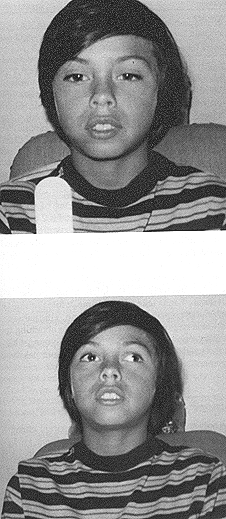
The Exotropias
Exotropia vs. Esotropia
- age of onset (duration)
- type of onset
- angle size

- frequency
- perceptual (sensory) adaptations
+ anomalous retinal correspondence~ sensory etiology~ motor etiology
+ suppression
+ amblyopia
- accommodative component
- prognosis
CHARACTERISTICS OF COMITANT EXOTROPIA
- onset, birth to 8 years; usually gradual
- frequency; usually intermittent
- refractive error; nothing outstanding
- retinal correspondence; NRC, co-variation with ARC
- amblyopia; in about 5% of cases
- AC/A ratio; normal or low
- symptoms; photophobia, squinting
- prognosis; usually good
CLASSIFICATION OF COMITANT EXOTROPIA
- fixation distance
+ convergence insufficiency+ divergence excess
+ basic exotropia
- frequency
+ intermittent+ constant
- age of onset
+ congenital+ infantile
+ childhood
+ adult
INTERMITTENT EXOTROPIA OF THE DIVERGENCE EXCESS TYPE
1. distance angle > near angle

2. deviation is intermittent
3. angle of deviation increases with fixation distance
4. weak accommodative skills
5. high AC/A ratio?
- near-far AC/A calculation- gradient AC/A determination

6. pseudo or simulated divergence excess
- prolonged occlusion
- + 3.00 gradient
- e.g.
distance CT: 30 pd exotropianear CT: 10 pd exotropia near
CT after occlusion: 25 pd exotropia
conclusion: pseudodivergence excess
really a basic exotropia

7. infrequent diplopia
- suppression- anomalous retinal correspondence
8. panoramic viewing 
MANAGEMENT OF INTERMITTENT EXOTROPIA OF THE DIVERGENCE EXCESS TYPE
1. refractive correction
- bifocal correction (for accommodative dysfunction)
- bifocal correction (for near point esophoria)
- reduce hyperopic correction
- over minus correction

+ Rx that bifocal
2. occlusion
3. prism
4. vision therapy
5. surgery
6. combined therapy